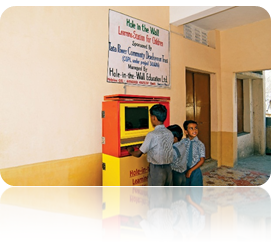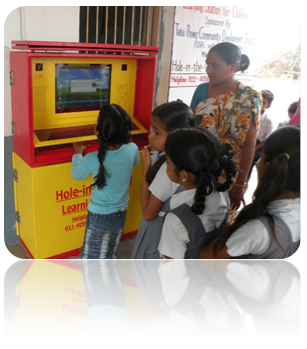“Multi Media computers have been set up right outside our classrooms. We can use them whenever we need to. Free of cost!” says 13-year-old Hardip Singh, his voice turning shrill with excitement. He lives with his parents in Tunda, a once sleepy village, tucked away in Kutch district of Gujarat. But like Hardip, Tunda, too, is wide awake now, brimming with energy and enterprise.  It is one of the six catchment villages that lay within the project site of the 4000 MW Ultra Mega Power Project, of Coastal Gujarat Private Limited (CGPL), a wholly owned subsidiary of Tata Power Company. Hardip prattles on, “Our classrooms have never been fuller. Every kid I know wants to join school because it is so much fun to work with computers.”
It is one of the six catchment villages that lay within the project site of the 4000 MW Ultra Mega Power Project, of Coastal Gujarat Private Limited (CGPL), a wholly owned subsidiary of Tata Power Company. Hardip prattles on, “Our classrooms have never been fuller. Every kid I know wants to join school because it is so much fun to work with computers.”
Hardip represents the 900 plus students, living and studying in the CGPL project zone, who proudly declare themselves to be ‘computer literate’. They are direct beneficiaries of Project Sujan, a CGPL initiative, implemented in partnership with Hole–in-the-Wall Education (Hiwell), a Joint Venture between NIIT and International Finance Corporation, part of the World Bank group. It is one of the many innovative concepts that CGPL has evolved and then successfully implemented in the domain of education in this region.
What is so special about this one?, you may ask. After all, Information and Communications Technology (ICT) projects have been the ‘flavour of the season’ for quite a while now, with both governmental and non-governmental agencies pumping in money to buy and set up computers in rural schools across the country. The difference is very basic, really. CGPL means business. It wants to make sure that the machines are actually being used, and are not sitting around, gathering dust in a store room somewhere. So it sets up learning stations in the villages, where both teachers and students are rigorously trained.  Orientation programmes are organised to provide tips on how to use the computer and how to trouble-shoot. The focus is on innovations in technology, hardware/software design and cognitive skills.
Orientation programmes are organised to provide tips on how to use the computer and how to trouble-shoot. The focus is on innovations in technology, hardware/software design and cognitive skills.
Very often CGPL staff, who offer their services as volunteers, are roped in to add a fresh dimension, perhaps a more professional one, to the tone of these workshops.
No, the monitoring does not end there. Students are regularly tested to gauge their skill levels, along with standard subjects like mathematics, science and others.
However, it is not all work and no play for the students. Games, simple software of infographics, interactive modules—the users are offered a range of cyber entertainment products which can double up as lessons.
CGPL authorities invest a lot of energy in keeping the local communities involved and engaged on every front. Project Sujan is no exception to this norm. Every time a new computer kiosk is launched; or a workshop is planned; or a school is awarded for a project, the community heavy weights are invited to participate.
“I used to wonder why my 10 year old daughter threw a tantrum if she had to miss school for some reason. Then I attended a computer workshop in her school and I knew why. Lessons can be as much fun as a game now! Wish these machines were there when I went to school,” says Laxman, a Panchayat office holder, wistfully.




